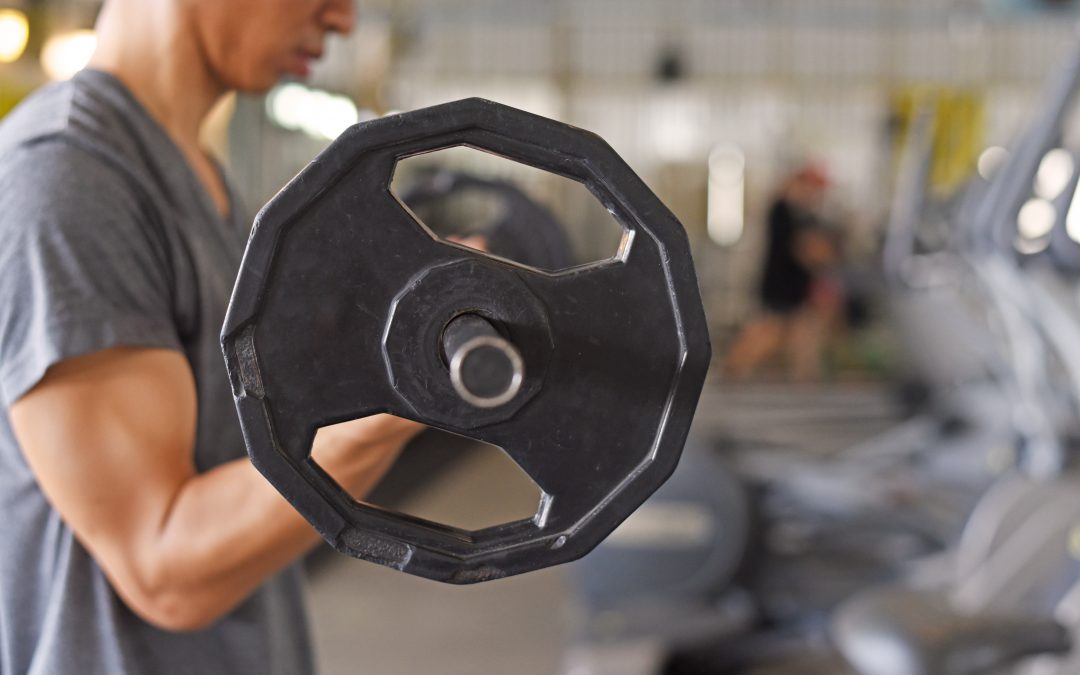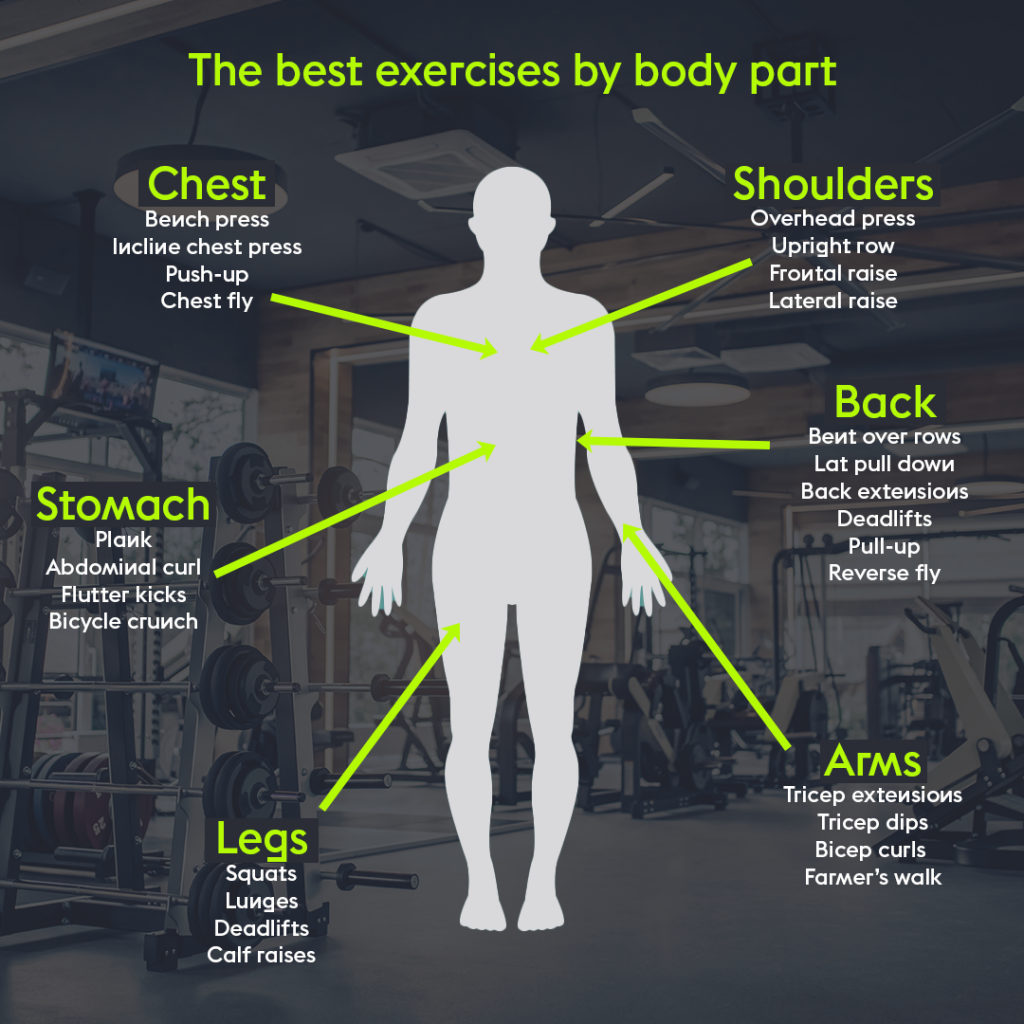Exercise is all about muscle contraction. Most forms of training we do in the gym or at home look to engage different muscle groups so we can develop strength, muscle mass, endurance, and all-round fitness.
There are hundreds of different muscles in the body. Over 650 in fact. From the big ones that run down your thighs to the tiny ones found in your ears – all of them are recruited in different ways when we perform different movements.
But it’s the biggest ones that we usually want to focus on. Understanding which ones are the prime movers and knowing the exercises that target them will help you be more efficient with your training. It’ll help you meet your goals, build well-rounded fitness, and avoid injury.
Are you an employer? Hussle now offer flexible, discounted access to our fitness venues as an employee benefit. Elevate employee wellbeing.
Upper Body
Deltoids
Your deltoids are your shoulder muscles and are separated into three bands of muscle fibres. Anterior deltoids, lateral deltoids and posterior deltoids. Simply put, that’s the bit at the front, the bit down the side, and the bit at the back.
Your deltoids are essential for most of your everyday upper body movement, and there are many exercises that you can do to target them. The different ways in which you move will engage the three different parts to different extents.
Our five favourite exercises for the deltoids are:
1. The overhead press
2. The frontal raise
3. The lateral raise
4. The upright row
5. The rear deltoid fly
Pectorals
Otherwise known as your chest. Or your pecs. These muscles connect the front of your body with your arms. There are four muscles in the pectorals, the largest of which is your pectoral major.
Our four favourite exercises for the pectorals are:
1. The push-up
2. The pull-up
3. The chest/bench press
4. The chest fly
Biceps
Very well-known and very well trained. These important muscles are used every time you bend your arm. It’s easy to think there’s only one exercise for your biceps: the curl. In fact, there are plenty of alternatives that do just as good a job.
Our three favourite exercises for the biceps are:
1. The pull-up
2. The bicep body row
3. The barbell bicep curl
Triceps
Seen as the opposing muscle group to the biceps, these are located on the back of the arm and are used every time you straighten it.
It’s easy to undertrain the tricep, as people often focus more on the muscles at the front. But your triceps are an essential muscle group. Without adequate strength in them, you’d be unable to do loads of common gym-based exercises. Plus, when your biceps are strong but your triceps are weak, you’re much more susceptible to injury.
Our four favourite exercises for the triceps are:
1. The tricep dip
2. The lying tricep extension
3. The tricep pushdown
4. The close grip tricep press
Latissimus Dorsi
Often called lats, these muscles are the big set that span lots of your lower back. We’ve placed them in the upper body section, but they can also be defined as a part of your core muscles. They’re a big triangle shaped set of muscles that help you with everything from swimming to breathing.
Our three favourite exercises for the latissimus dorsi are:
1. The Lat pull down
2. The dumbbell pullover
3. The chin up
Trapezius
Your traps are located on your upper back, above your lats. They’re a pair of triangular-shaped muscles that also play a part in your posture by stabilising your shoulders and helping them move.
Our three favourite exercises for the trapezius muscles are:
1. Barbell bent-over row
2. Machine parallel row
3. Inverted body row
Not everyone has the time to think about every muscle group. It would take multiple gym sessions to fit in all of these upper body exercises.
That’s why going for compound exercises is always the best idea. Compound exercises work not just one muscle but multiple muscles. They might primarily target one group, but they’ll recruit the help of many more groups to help you perform the movement and stabilise you. When you keep compound moves at the heart of your routine, you’ll get more for less.
The best upper-body compound exercises:
1. Push-ups
2. Pull-ups
3. Overhead press
4. Rows
Lower Body
Quadriceps
Your quads are those big muscles that run down the front of your thigh. They’re a group of four muscles, heavily used in every basic movement like walking, running, jumping and sitting.
Likely, you will already engage your quads quite a lot in exercise, and you’ll probably have felt them burn before after a very active session.
Our four favourite exercises for the quadriceps are:
1. The lunge
2. The squats
3. The leg extension
4. The leg press
Glutes
Your glutes are the largest muscle in the body. If you’re doing something with your lower body, you’re probably engaging the glutes. In technical terms, glute function includes extension, abduction, external hip rotation and internal hip rotation. In non-technical terms, your glutes are involved in pretty much everything you do with your legs.
Our four favourite exercises for the glutes are:
1. The squat
2. The glute bridge
3. The deadlift
4. The leg press
Hamstrings
Often known to give people grief, the hamstring muscles are located on the back of the thigh. They are the opposing muscle to the quads which means when you contract the muscles in the front of your thigh, your hamstrings are the back will lengthen.
Your hamstrings play an important part in lower body strength and help keep you injury-free.
Our four favourite exercises for the hamstrings are:
1. The deadlift
2. The leg curl
3. The squat
4. The leg press
Solus and Gastrocnemius
Better known as your calves. Just as important as any other part of your leg, the calves are made up of two muscles that support the movements of the ankle and lower knee.
Our favourite exercise for the soleus and gastrocnemius muscles are:
1. The calf raise
Core
Abdominals
Whether you train them on upper or lower body days (or even every day), the abs are a large focus for many fitness enthusiasts. In terms of function, your abs help you maintain posture, support your trunk, tilt your pelvis, curve your spine and basically hold all your organs in place. So, pretty important.
Our two favourite exercises for the abdominals are:
1. The plank
2. The sit-up
Erector Spinae
Your erector spinae is a long muscle group that runs down the length of your spine. These muscles are an equally important part of your core, as they play a big role in keeping you upright, maintaining your posture, and supporting your trunk.
When training your core, it can be easy to neglect the muscles on your back and focus only on the front. Remember to focus on both sides to develop overall strength and remain injury-free.
Our two favourite exercises for the erector spinae are:
1. The plank
2. The back extension
The best lower body compound exercises:
1. Deadlifts
2. Squats
3. Lunges




